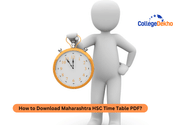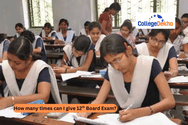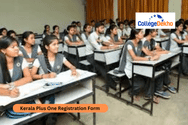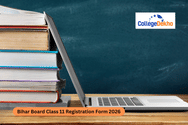Bihar Board 12th Syllabus 2025-26 is listed online at biharboardonline.com. The bihar board syllabus class 12 2025 is available in a single PDF uploaded online for all the subjects included in the 12th curriculum.
- Latest Updates
- Bihar Board 12th English Syllabus 2025-26
- Hindi Syllabus Class 12 Bihar Board 2025-26
- Bihar Board 12th Math Syllabus 2025-26
- Bihar Board 12th Physics Syllabus 2025-26
- Bihar Board 12th Chemistry Syllabus 2025-26
- Bihar Board 12th Biology Syllabus 2025-26
- Bihar Board 12th Computer Science Syllabus 2025-26
- Bihar Board 12th Syllabus 2025-26 for History
- Bihar Board 12th Syllabus 2025-26 for Political Science
- Bihar Board 12th Syllabus 2025-26 for Geography
- Bihar Board 12th Economics Syllabus 2025-26
- Bihar Board 12th Business Studies Syllabus 2025-26
- Bihar Board 12th Accounts Syllabus 2025-26
- BSEB Syllabus Class 12 2026 PDF
- Faqs
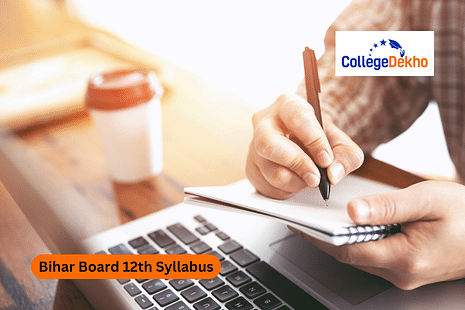

Never Miss an Exam Update
Bihar Board 12th Syllabus 2025-26 can be downloaded from the official website of the Bihar School Examination Board at biharboardonline.com. The Bihar Board syllabus class 12 2026 for all subjects of the different streams is present in a single PDF. 100 marks are allotted for every subject included in the curriculum in class 12th. These marks are divided into theory and practical papers. The theory paper will include MCQs along with subjective-type questions. The question paper will be based on the latest syllabus as uploaded online. You must complete the Bihar Board syllabus class 12 2026 as soon as possible and practice model test papers for effective preparation. You can also check the Bihar Board Syllabus 2026 Class 12 Science PDF mentioned below to download the latest curriculum easily with just a click.
You must also check the Bihar Board 12th Exam Pattern 2025-26 to get an idea of the marking scheme when preparing for the Bihar Board 12th Syllabus 2026 Science, Commerce, and Arts. Check more information about the Bihar Board 12th Syllabus 2025-26 here:
Latest Updates
November 29, 2025: BSEB released the Bihar Board 12th exam dates 2026 on November 29, 2025, as per which Bihar Board Class 12 exams will be held from February 2 to February 13, 2026.
Bihar Board 12th English Syllabus 2025-26
English is compulsory for all the students irrespective of their streams. Check the Bihar Board Class 12 English Syllabus 2025-26 here:
Particulars | Marks |
|---|---|
[Any 50 questions to be answered out of 100 from this section] | 50 |
| 50 |
Hindi Syllabus Class 12 Bihar Board 2025-26
The Hindi Syllabus for Class 12 Bihar Board 2025-26 includes various topics, all of which are equally important. You can learn about the prose, poetry, and Class 12 Hindi Grammar Syllabus Bihar Board 2026, below:
Prose
Sections | Topics |
|---|---|
Prose | श्रम विभाजन और जाति प्रथा |
नागरी लिपि | |
विष के दौत | |
बहादुर | |
भारत से हम क्या सीखें | |
परम्परा का मूल्यांकन | |
नाखून क्यों बढ़ते हैं? | |
जित मैं निरखत हूँ | |
अविन्यों | |
नौबतखाने में इबादत | |
मछली | |
शिक्षा और संस्कृति |
Poetry
Sections | Topics |
|---|---|
Poetry | राम बिनु बिरथर जगी जनमा, जो नर दुःख में दुःख नाहीं मानि |
हमारी नींद | |
स्वदेशी | |
अक्षर ज्ञान | |
जनतंत्र का जन्म | |
लौटकर आऊंगा फिर | |
हिरोशिमा | |
एक वृक्ष की हत्या | |
मेरे बिना तुम प्रभु |
Class 12 Hindi Grammar Syllabus Bihar Board 2025
Section | Topics |
|---|---|
Grammar | संज्ञा, सर्वनाम शब्द-शक्ति |
समास, उपसर्ग, संधि- समास में अंतर अर्थालंकार-उपमा | |
काल, संधि अलंकार, वक्रोक्ति | |
विशेषण, कारक, व्यंजन | |
प्रत्यय कर्ता का, 'ने' चिह्न उपसर्ग-प्रत्यय में अंतर | |
वाक्य-शुद्धि, शब्द-शुद्धि, वाच्य और उनके भेद | |
पदबंध, वाक्य के प्रकार | |
लोकोक्ति, मुहावरा पदवन्य चंद, काव्यगुण, वर्णिक छंद |
Bihar Board 12th Math Syllabus 2025-26
A total of 6 units are included in the Bihar Board Class 12 Math Syllabus 2025-26 . Check the detailed information from the table given below:
Unit & Title | Topics |
|---|---|
Unit 1: Relations and Functions | i) Relations and Functions: Types of relations: reflexive, symmetric, transitive, and equivalence relations. One-to-one and onto functions, composite functions, inverse of a function, binary operations. ii) Inverse Trigonometric Functions: Definition, range, domain, principal value branch. Graphs and elementary properties of inverse trigonometric functions. |
Unit 2: Algebra | i) Matrices: Concept, notation, order, equality, types of matrices, zero and identity matrix, transpose, symmetric and skew-symmetric matrices. Matrix operations: addition, scalar multiplication, multiplication (non-commutative), elementary operations, invertible matrices, uniqueness of inverse. ii) Determinants: Determinants (up to 3×3), properties, minors, cofactors, area of triangle, adjoint and inverse, system of linear equations (consistency, uniqueness, inverse method). |
Unit 3: Calculus | i) Continuity and Differentiability: Derivative of composite, inverse trigonometric, exponential, logarithmic, implicit, parametric functions. Second order derivatives. Rolle’s and Lagrange’s Mean Value Theorems (without proof). ii) Applications of Derivatives: Rate of change, increasing/decreasing functions, tangents/normals, approximations, maxima and minima (first/second derivative tests), real-life applications. iii) Integrals: Integration as inverse of differentiation, methods (substitution, partial fractions, by parts), definite integrals, properties, Fundamental Theorem (without proof). iv) Applications of Integrals: Area under curves (lines, circles, parabolas, ellipses), area between curves. v) Differential Equations: Order, degree, general/particular solutions, formation, variable separation, homogeneous equations, linear equations (dy/dx + py = q). |
Unit 4: Vectors and 3-D Geometry | i) Vectors: Scalars/vectors, magnitude, direction, direction cosines/ratios, vector types, position vector, vector addition, scalar multiplication, section formula, scalar and vector products, scalar triple product. ii) 3-D Geometry: Direction cosines/ratios of a line, Cartesian/vector equations of lines and planes, skew lines, shortest distance, distance from point to plane, angles between lines/planes. |
Unit 5: Linear Programming | Introduction to LPP, terms: constraints, objective function, optimization, types of problems. Formulation of LPP, graphical solutions (2 variables), feasible/infeasible regions and solutions, optimal solutions (up to 3 constraints). |
Unit 6: Probability | Multiplication theorem, conditional probability, independence, total probability, Bayes’ theorem, random variable and distribution, mean and variance, Bernoulli trials, binomial distribution. |
Bihar Board 12th Physics Syllabus 2025-26
You can refer to the units included in the Bihar Board Class 12 Physics Syllabus 2025-26 from the table given below to prepare for the board exams accordingly:
Units | Class 12 Bihar Board Syllabus 2026 Science |
|---|---|
Electrostatics | Electric Charges, Conservation of charge, Coulomb’s law force between two-point charges, forces between multiple charges, the electrical potential energy of a system of two-point charges and electric dipole in an electrostatic field, etc. |
Current Electricity | Ohm’s law, electrical resistance, V-I characteristics (linear and nonlinear), electrical energy and power, electrical resistivity and conductivity, Kirchhoff’s laws and simple applications. Wheatstone bridge, metre bridge, etc. |
Magnetic Effect of Current and Magnetism | Torque on a magnetic dipole (bar magnet) in a uniform magnetic field; bar magnet as an equivalent solenoid, Force on a moving charge in a uniform magnetic and electric field, Earth’s magnetic field and magnetic elements, etc. |
Electromagnetic Induction and Alternating Currents | Electromagnetic induction; Faraday’s law, induced emf and current; Lenz’s Law, peak and RMS value of alternating current/voltage; reactance and impedance, etc. |
Electromagnetic Waves | Electromagnetic waves, their characteristics, their transverse nature, Electromagnetic spectrum, including elementary facts about their uses, etc. |
Optics | Refraction of light, total internal reflection and its applications, lensmaker’s formula. Magnification, power of a lens, Reflection of light, spherical mirrors, mirror formula, a combination of thin lenses in contact, etc. |
Dual Nature of Matter | Matter waves-wave nature of particles, de Broglie relation, Photoelectric effect, Hertz and Lenard’s observations; Einstein’s photoelectric equation-particle nature of light, Davisson-Germer experiment, etc. |
Atoms and Nuclei | Bohr model, energy levels, hydrogen spectrum, Composition and size of nucleus, Alpha-particle scattering experiment; Rutherford’s model of atom; atomic masses, isotopes, radioactive decay law, etc. |
Electronic Devices | transistor as a switch, I-V characteristics of the transistor, transistor as an amplifier (common emitter configuration), the basic idea of analogue and digital signals, etc. |
Communication Systems | Propagation of electromagnetic waves in the atmosphere, amplitude modulation. Production and detection of an amplitude-modulated wave, etc. |
Bihar Board 12th Chemistry Syllabus 2025-26
In the Bihar Board 12th Syllabus 2026 Science, Chemistry are one among the most difficult topics. Refer to the table given below for a detailed explanation of the units and topics included in the Bihar Board Class 12 Chemistry Syllabus 2025-26 :
Units | Class 12 Bihar Board Syllabus 2026 Science |
|---|---|
Unit 1: Solid State | Electrical and magnetic properties, Packing efficiency, voids, number of atoms per unit cell in a cubic unit cell, point defects, etc. |
Unit 2: Solutions | Osmotic pressure, determination of molecular masses using colligative properties, Elevation of boiling point, depression of freezing point, abnormal molecular mass, etc |
Unit 3: Electrochemistry | Kohlrausch’s Law, lead accumulator, Conductance in electrolytic solutions, specific, variations of conductivity with concentration, etc. |
Unit 4: Chemical Kinetics | Integrated rate equations and half-life, the concept of collision theory (elementary idea, no mathematical treatment), etc |
Unit 5: Surface Chemistry | Brownian movement, electrophoresis, Lyophobic multimolecular and macromolecular colloids; properties of colloids; Tyndall effect, coagulation, emulsion-types of emulsions, etc |
Unit 6: General Principles and Processes of Isolation of Elements | Occurrence and principles of extraction of aluminium, copper, zinc and iron, Principles and methods of extraction – concentration, oxidation, reduction – electrolytic method and refining; etc |
Unit 7: p-block Elements | Halides PCl3, Ozone, Sulphur-allotropic forms; Phosphorus – allotropic forms, Preparation properties and uses of sulphur-dioxide, etc. |
Unit 8: d and f-block elements | Magnetic properties, interstitial compounds, Metallic character, ionization enthalpy, preparation and properties of K2Cr2O7 and KMnO4, etc |
Unit 9: Coordination Compounds | IUPAC nomenclature of mononuclear coordination compounds. Bonding, Introduction, ligands, coordination number, Werner’s theory, VBT, and CFT; structure and stereoisomerism, etc |
Unit 10: Haloalkanes and Haloarenes | Nomenclature, nature of C-X bond, physical and chemical properties, substitution reactions, etc |
Unit 11: Alcohols, Phenols, and Ethers | Mechanism of dehydration, physical and chemical properties, uses, uses with special reference to methanol and ethanol, etc |
Unit 12: Aldehydes, Ketones, and Carboxylic Acids | Nomenclature, nature of carbonyl group, methods of preparation, physical, uses, methods of preparation, etc |
Unit 13: Amines (Organic Compounds and containing Nitrogen) | Classification, structure, methods of preparation, secondary and tertiary amines, etc |
Unit 14: Biomolecules | Monosaccharides (glucose and fructose), polysaccharides (starch, cellulose, glycogen) importance, etc |
Unit 15: Polymers | Biodegradable and non-biodegradable polymers, etc, Some important polymers: natural and bakelite, rubber, etc |
Unit 16: Chemistry in Everyday Life | Tranquillizers antiseptics, disinfectants, antacids, antihistamines, artificial sweetening agents, etc |
Bihar Board 12th Biology Syllabus 2025-26
A total of 5 units are included in the Bihar Board Class 12 Biology Syllabus 2025-26 . Information about the Bihar Board 12 syllabus 2026 Science is included in the table given below:
Unit | Bihar Board 12 Syllabus 2026 Science | Weightage |
|---|---|---|
1. | Reproduction and development | 06 |
2. | Genetics and organic evolution | 18 |
3. | Biotechnology & its application | 18 |
4. | Applied Biology and Human Welfare | 18 |
5. | Man and Environment | 10 |
Total | 70 |
Bihar Board 12th Computer Science Syllabus 2025-26
Computer Science is another subject of the Bihar Board Class 12th Syllabus 2026 Science. Refer to the detailed Bihar Board Class 12 Computer Science Syllabus 2025-26 here :
Unit & Name | Topics & Details |
|---|---|
Unit 1: Programming in C++ | Review of C++ (Class XI Concepts); Structures: Definition, accessing elements, passing structures to functions, arrays of structures; Object-Oriented Programming (OOP): Data hiding, encapsulation, classes, objects, polymorphism (function overloading); Inheritance (single, multilevel, multiple), abstract and concrete classes; Constructors & Destructors: Default, parameterized, copy constructors; File Handling: Text files (creation, reading, modification), Binary files (searching, appending, deletion); Pointers & Dynamic Memory Allocation: new, delete, reference variables |
Unit 2: Data Structures | Arrays: 1D & 2D arrays (traversal, searching, sorting, merging); Stack & Queue: Array and linked implementations, Operations (PUSH, POP, INSERT, DELETE), Infix to Postfix Conversion & Evaluation |
Unit 3: Database and SQL | Relational Database Concepts: Keys (primary, candidate, alternate), relational algebra; SQL Commands: CREATE, DROP, ALTER, SELECT, INSERT, UPDATE, DELETE; Functions: SUM, AVG, COUNT, MAX, MIN |
Unit 4: Boolean Algebra | Laws & Theorems: De Morgan’s Law, Duality Principle; Logic Gates: AND, OR, NOT, NAND, NOR; Karnaugh Maps (up to 4 variables) |
Unit 5: Communication & Network Concepts | Transmission Media: Optical fiber, satellite, microwave; Network Devices: Router, switch, modem; Protocols: TCP/IP, FTP, HTTP; Cyber Security: Firewalls, hacking prevention |
Bihar Board 12th Syllabus 2025-26 for History
There are a total of 4 units included in the Bihar Board Class 12 History Syllabus 2025-26 to be studied by the students. Check the detailed information from the table given below:
Unit | Topics |
|---|---|
1 | Indian History Part I: Harappan Archaeology, Political & Economic History, Social History, History of Buddhism and other religions, etc. |
2 | Indian History Part II: Agrarian Relations, The Mughal Court, New Architecture, Religious Histories, etc. |
3 | Colonialism & Rural Society, Colonialism & Indian Towns, The Nationalist Movement, Nationalism, Communalism & Partition, The Making of the Constitution, Independence & New Nation-State, etc. |
4 | Map Work |
Bihar Board 12th Syllabus 2025-26 for Political Science
The Political Science paper will be conducted for 100 marks, including the practical exams. Check out the list of topics from the table given below:
Unit No. & Name | Contents |
|---|---|
Unit 1: Making of Indian Constitution and its Goal | (i) Constitutional Development, (ii) Sources of Constitution, (iii) Constituent Assembly, (iv) Preamble |
Unit 2: Salient features of the Indian Constitution | - |
Unit 3: Working of Federalism in India | (i) Indian federation and its units, (ii) Process of changes of name, boundary and territory of state, (iii) Controversial issues, (iv) Aim and characteristics of federal state, (v) Unitary features |
Unit 4: Fundamental Rights and Duties | (i) Meaning, (ii) Importance, (iii) Characteristics, (iv) Amendments in fundamental rights |
Unit 5: Directive Principles of State Policy | (i) Nature and sources, (ii) Difference between fundamental rights and directive principles of state policy, (iii) Importance |
Unit 6: Union Executives | (i) President – Election, Powers, functions, real position, impeachment, (ii) Vice-President – Election, Power & Function, (iii) Council of Ministers – Composition (with special reference to coalition politics), (iv) Prime Minister – Power, functions & Role |
Unit 7: Parliament | (i) Lok Sabha – Composition, Power, function, (ii) Rajya Sabha – Composition, Power, function |
Unit 8: State Executive | (i) Governor – Power, Function and Position, (ii) Council of Ministers – Power, function and role with special reference to coalition politics, (iii) Chief Minister – Power, function, duties and role |
Unit 9: State Legislature | (i) Bihar Legislative Assembly – Composition, power and function, (ii) Bihar Legislative Council – Composition, power and function |
Unit 10: Indian Judiciary | (i) Supreme Court of India – Organisation and function, (ii) Patna High Court – Organisation and functions, (iii) Lok Adalat, Fast Track Courts, Family Courts, PIL |
Unit 11: Electoral System in India | (i) Election Commission, (ii) Electoral Process – Maladies and reforms, (iii) Importance of Voting, (iv) Party system and role of opposition |
Unit 12: Working of Local Self Government with special reference to Bihar | (i) 73rd and 74th constitutional amendments, (ii) Bihar Panchayati Raj (Amendment) Act – 2006, (iii) Rural and Urban local govt. |
Unit 13: National Integration and Challenges | (i) Communalism, (ii) Regionalism, (iii) Casteism, (iv) Naxalism |
Unit 14: Foreign Policy of India | (i) Determinants, (ii) Basic principles with special reference to nuclear policy, (iii) NAM, SAARC, UNO |
Bihar Board 12th Syllabus 2025-26 for Geography
Check the detailed Bihar Board Class 12 Geography Syllabus 2025-26 here:
Fundamentals of Human Geography | |
|---|---|
Unit | Key Concepts |
1. Fundamentals of Human Geography | - Nature and Scope |
2. People | - Population of the world: distribution, density, and growth - Population change, spatial pattern and structure, determinants of population changes, age and sex ratio, rural-urban composition - Human development, concept, selected indicators, international comparison |
3. Human Activities | - Primary activities: Concept and changing trends, gathering, pastoral mining, subsistence agriculture - Secondary activities: Concept, manufacturing, agro-processing, household, small scale, large scale - Tertiary activities: Concept, trade, transport, and communication - Quaternary activities: Knowledge-based industry, information technology – USA, Britain, India, its contribution |
4. Transport, Communication & Trade | - Land Transport: Road, Railways, Air, Water - Satellite Communication, Cyber Zone - International Technology – USA, Britain, India, its contribution |
5. Human Settlement | - Types, characteristics & problems: Rural & Urban - Morphology of cities - Problems related to human settlements in developing countries |
India: People and Economy | |
6. Introduction | - Location, Neighbourhood relations and place of India in world |
7. Physical Aspects & Drainage System | - Physiography, relief, drainage system, physical divisions |
8. Climate, Vegetation and Soil | - Weather & climate, distribution of temperature, pressure, winds & rainfall - Indian monsoons, natural vegetation – types and distribution - Wildlife conservation - Soil, major types (ICAR classification), their distribution and conservation |
9. Resources and Development | - Land resources: Agriculture land use, major crops, and agricultural development and problems - Water resources: Achievement and usages, problems and conservation - Mineral and energy resources: Metals and non-metals, minerals and its distribution and conservation, conventional and non-conventional resources of energy |
10. Transport, Communication & International Trade | - Road, railways, waterways, airways, gas and oil pipeline, national electricity grid |
11. Population | - Distribution, density & growth - Composition of population, language and religion, rural-urban population |
12. Natural Hazards and Management | - Flood and drought, earthquake and volcano, landslides, cyclones, tsunami |
Bihar Board 12th Economics Syllabus 2025-26
Refer to the Bihar Board Class 12 Economics Syllabus 2025-26 from the table given below:
| Part | Unit | Course of Study | No. of Periods |
|---|---|---|---|
| A | 1 | Introduction | 5 |
| 2 | Consumer Behaviour and Demand | 25 | |
| 3 | Producer Behaviour & Supply | 37 | |
| 4 | Forms of Market and Price Determination | 20 | |
| 5 | Simple applications of Tools of demand and supply curves | 12 | |
| B | 6 | National Income and Related Aggregates | 30 |
| 7 | Determination of Income and Employment | 25 | |
| 8 | Money and Banking | 18 | |
| 9 | Government Budget and the Economy | 17 | |
| 10 | International Projects in Economics | 10 | |
| C | Developing Projects in Economics | 10 | |
| Total no. of Periods required | 218 |
Bihar Board 12th Business Studies Syllabus 2025-26
Refer to the Bihar Board Class 12 Business Studies Syllabus 2025-26 from the table given below:
Unit/Topic |
|---|
Part A: Foundations of Business |
1. Nature & Purpose of Business |
2. Forms of Business Organization |
3. Private, Public & Global Enterprises |
4. Business Services |
5. Emerging Modes of Business |
6. Social Responsibility & Ethics |
Part B: Corporate Org., Finance & Trade |
1. Formation of a Company |
2. Sources of Business Finance |
3. Small Business & Entrepreneurship |
4. Internal Trade |
5. International Business |
Part C: Project Work |
Project Report + Viva |
Total |
Bihar Board 12th Accounts Syllabus 2025-26
Check the Bihar Board Class 12 Accountancy Syllabus 2025-26 from the table given below:
| Unit Number & Name | Topics |
|---|---|
| Unit - 1: Accounting for Not-for-Profit Organisation |
- Not for profit organisation: Meaning and examples.
Receipts and Payments: Meaning and concept of fund-based accounting. Preparation of Income and Expenditure Account and Balance Sheet from the Receipt and Payment Account with additional information. |
| Unit - 2: Accounting from Incomplete Records |
- Single Entry Scheme – Meaning, Essentials, Disadvantages, Statement of Affairs – Meaning and Distinction with Balance Sheet.
Ascertaining Profit or Loss under single-entry system. Conversion of Single entry system into double entry system. |
| Unit - 3: Accounting for Partnership Firms |
- Partnership: Meaning, Nature of Partnership firm; Partnership Deed-meaning, Contents and Importance.
Goodwill – Meaning, Nature, Factors Affecting and Methods of Valuation: Average profit, Super profit and Capitalization methods. Admission, Retirement and Death of partners and preparation of their accounts: Accounting for Revaluation of assets and Liabilities & distribution of reserves and Accumulated Profits. Treatment of goodwill and Adjustment of capital. |
| Unit - 4: Accounting for Share Capital and Debenture |
- Joint Stock Company: Meaning and Features.
Share Capital: Meaning, Nature and Types of Shares. Accounting for Share Capital: Issue and Allotment of Equity and Preference Shares; Over Subscription; Under Subscription; Issue at par, premium and discount; calls in advance, calls in arrears; issue of shares for consideration other than cash. Accounting treatment of forfeiture and reissue of shares. Accounting for Debentures: Issue of debentures – issues at par, premium, and at discount; issue of debentures for consideration other than cash. |
| Unit - 5: Analysis of Financial Statements | - Financial Statements of a Company: Meaning, Objectives & Components. - Financial analysis – Meaning, need. - Tools for Financial Statement Analysis: Accounting Ratios – meaning and objectives, types and computation. - Liquidity Ratios: Current Ratio, Liquidity Ratio. - Solvency Ratios: Debt to Equity, Total Assets to Debt, Proprietary Ratio. - Activity Ratios: Inventory Turnover, Debtors Turnover, Payables Turnover, Working Capital Turnover, Fixed Assets Turnover, and Current Assets Turnover. - Profitability Ratios: Gross Profit, Operating Ratio, Net Profit Ratio, Return on Investment, Earning Per Share, Dividend per share, etc. |
| Unit - 6: Statement of Changes in Financial Position (Cash Flow Statement) | - Cash Flow Statement: Meaning and Objectives, preparation, adjustment related to depreciation, dividend and tax, sale and purchase of non-current assets (as per revised standard issued by ICAI). |
| Unit - 7: Project work in Accounting OR Computerised Accounting | (A) Project Work in Accounting (15 Periods) OR (B) Computerised Accounting (15 Periods) - Database design for accounting. - Entity relationship model. - Relational data model. - Structured Query Language (SQL). - Overview of computerized accounting system. - Fundamentals of computerized accounting systems. - Concept of grouping of accounts. - Codification of accounts. - Application of computers in Financial Accounting (IAS Access): Accounting procedures used in practice for recording cash, bank and journal transactions. - Preparation of ledger accounts, cash book, bank book and Trial Balance. |
BSEB Syllabus Class 12 2026 PDF
You can download the official Class 12 Bihar Board syllabus 2026 by clicking on the direct link given below:
You need to understand the detailed BSEB Syllabus Class 12 2026 to prepare for the board exams. Ensure that you download the stream-wise syllabus, including the Bihar Board Class 12th syllabus 2026 Science, and also for the stream you have chosen to prepare for the board exam thoroughly. You can also get the Bihar Board Class 12 Arts syllabus in Hindi from the official website of BSEB for an effective revision.
Are you feeling lost and unsure about what career path to take after completing 12th standard?
Say goodbye to confusion and hello to a bright future!

FAQs
Yes. As per the latest Bihar Board 12th Syllabus 2025-26, there will be 50% MCQ-based questions and 50% subjective questions included in the curriculum.
Yes, the Bihar School Examination Board (BSEB) prescribes and follows NCERT books as part of its Class 12 curriculum. Therefore, students must refer to the NCERT books to cover the Bihar Board 12th Syllabus 2025-26.
In Science steam, Physics, Chemistry, Mathematics, Biology, English, and Computer Science are included. In the Commerce stream, Accountancy, Business Studies, Economics, Mathematics, and English are included. In the Humanities/Arts stream, History, Geography, Political Science, English, Psychology, and Sociology are included in the Bihar Board 12th Syllabus 2025-26.
You can download the latest Bihar Board 12th Syllabus 2025-26 from the official website of BSEB. Students can visit biharboardonline.bihar.gov.in/ to check the syllabus. The detailed syllabus is available for each subject in the PDF format.
To improve the overall percentage, students can add one additional subject in the exams. The additional subject can help in scoring good marks.
Was this article helpful?










